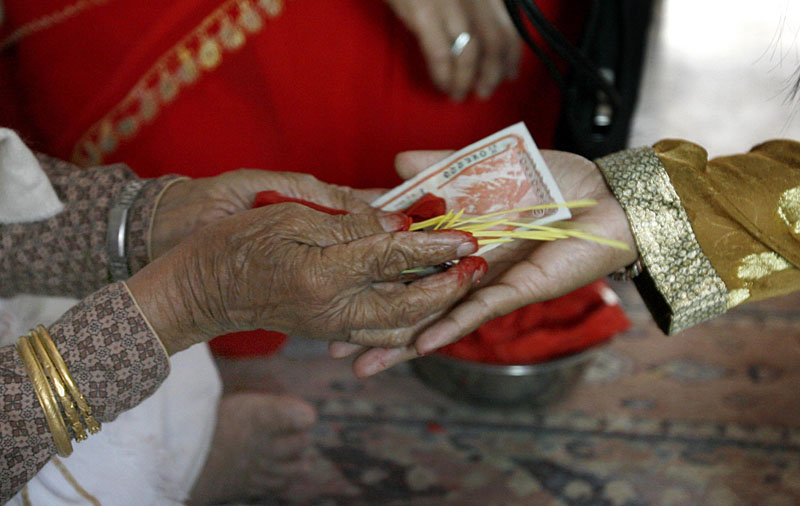LETTERS: Reduce entry fee
Apropos of the news story “Entry fee for tourists hiked” (THT, Oct.19, Page 9), in the face of dwindling tourists and trickling state support, raising the entry fee may be one of the few options available to rehabilitate the world famous cultural heritage of the Newar Valley. Sometimes – and this has continued in the country for almost 15 years – it is hard not to increase the price while business is at the bottom when it should have been the other way round. But we are a special country and special people and we should not do what the world does and that is to lower prices when the business is low. The only thing that surprises is that the authorities have not decided to charge the entry fee for 400 from 250 tourists a day.
J. Talchabhadell, Bhaktapur
Dashain Aayo
Dashian is the great festival of Nepal and it is also the time of family reunion, the exchange of gifts and blessings, profuse Pujas, ritual bathing and animal sacrificing. There is a sort of all pervading carefree atmosphere throughout the country when attempts are made to bury the feuds, quarrels and misunderstanding between families and friends and to start afresh. Dashain honours the goddess Durga, who was created out of the Shakti of all the gods, armed with weapons from each of them. Goddess Durga, the vanquisher, who saved the world from the destruction by the evil forces, symbolizing valour and prowess, is worshiped and offered animal sacrifices for the devotees’ progress and prosperity. During this festival, men indulge in a variety of activities while women get themselves busy with prayers and preparations of delicious foods. In almost every home in villages, small towns, and cities and in the courtyards of temples in Kathmandu and elsewhere people throng Durga temples. The festival starts with “Ghatasthapana” which means the installation of sacred vessel or “Kalash” which could be an earthen pot. Early in the morning people go to the river for a ritual bath and come back with the “Kalash” filled with the water and sand from the river. The sand is spread in the “Pooja room”, which virtually every Hindu household has, and various seeds are sown in this sand and then the “Kalash” is placed on it. This done, the head of the family or a priest performs puja for Goddess Durga at an astrologically auspicious moment. The aim of Puja is to request the Goddess to symbolically make the “Kalash” her home. Holy river water is sprinkled on the sand every day. On the tenth day, the yellow seedlings of the barley, called “Jamara” are collected and worn behind the year or tied in the hair along with flowers as a blessing from the Goddess. This is purely a festival worshipping the Goddess Durga. The ten-day worshipping is concluded in the form of Fulpati which is released in the river or on ponds marking the great festival.
Rajesh Kumar Chaudhary, via e-mail






